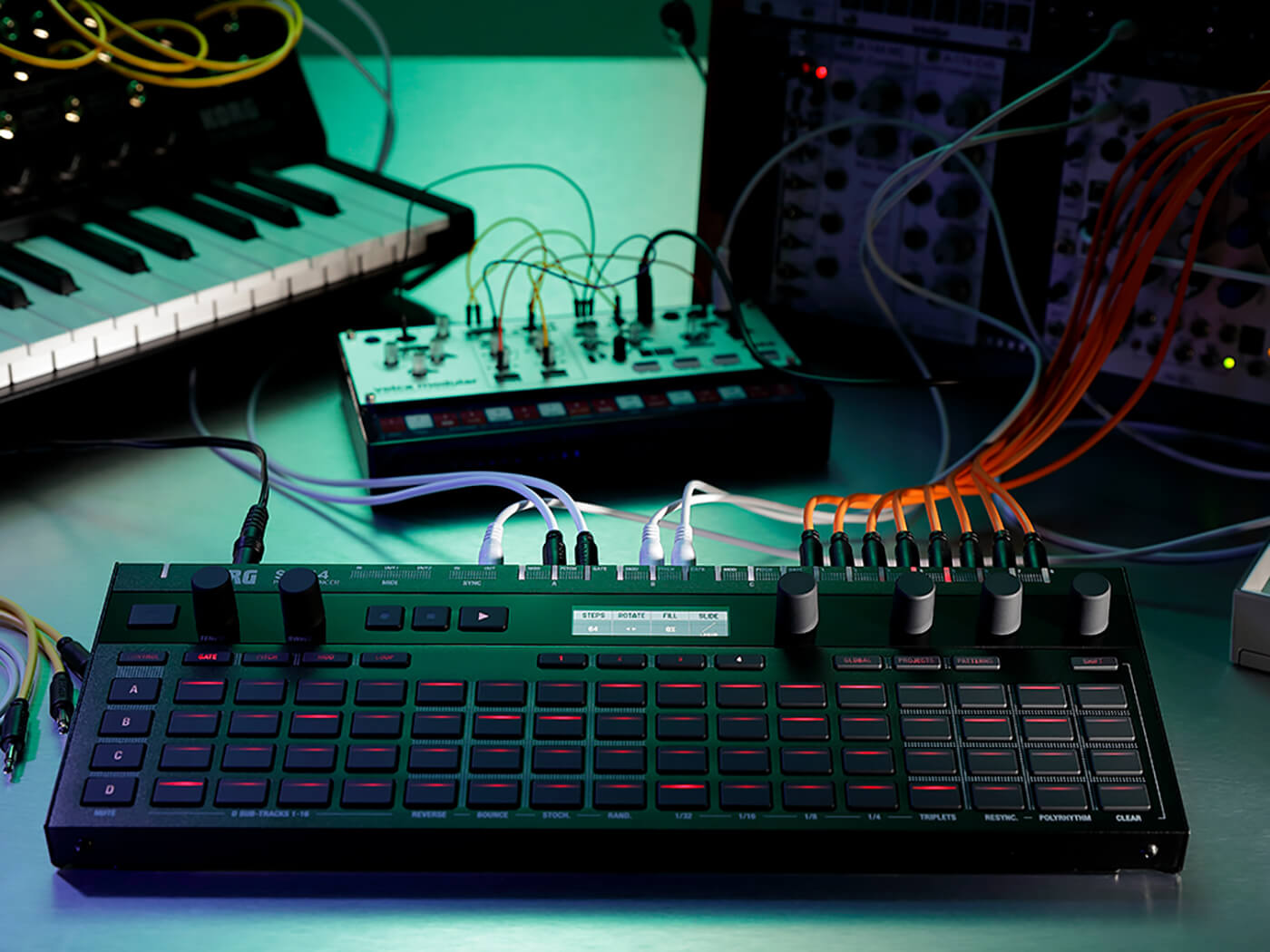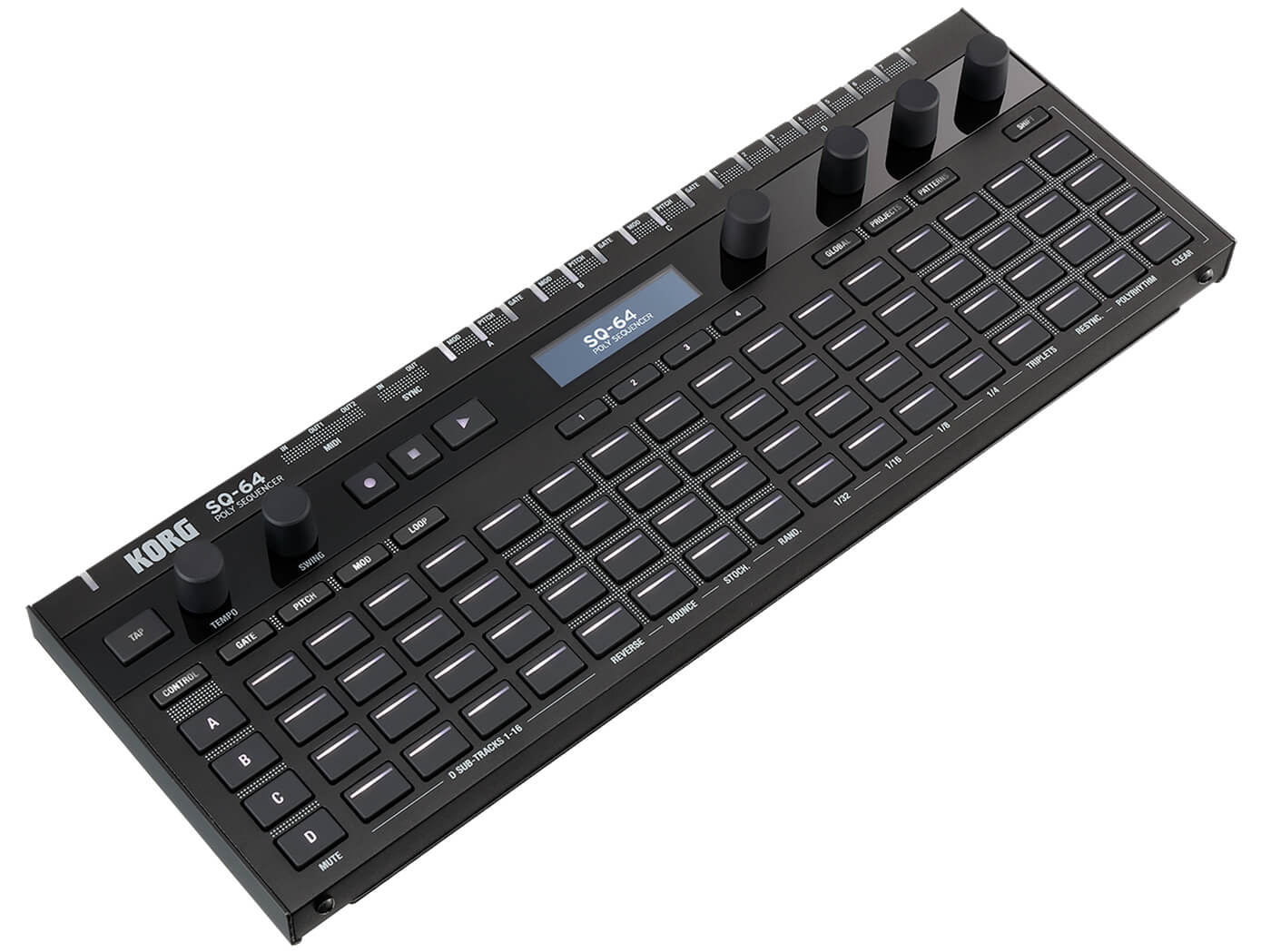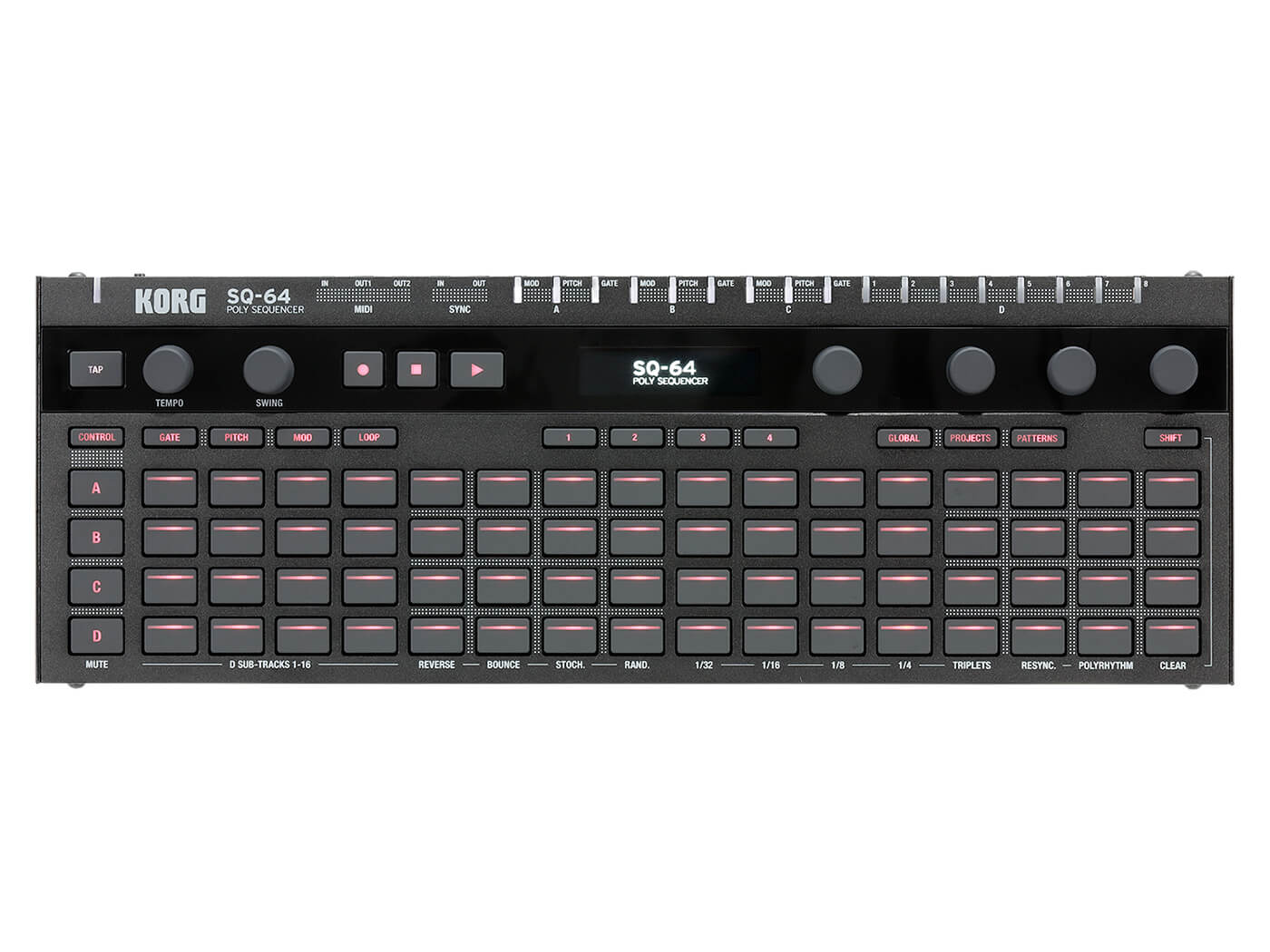Review: Korg SQ-64 Poly Sequencer
Can the company’s latest sequencer bring unrivalled connectivity and deep editing to DAWless setups?

Review Overview
Our rating
7
Our verdict
⊕ Each step can be adjusted in many ways
⊕ Polyrhythmic and stochastic playable modes
⊖ Low display and button brightness without PSU
⊖ Not enough backlight colour variation make programming difficult
⊖ MIDI adaptors not provided
Despite some flaws in the step button backlighting design, the SQ-64 is a powerful step sequencer capable of being used with a wide range of other gear.
Price $299/£269
Contact Korg
With the explosion in analogue hardware, accelerated mainly by Korg itself, it seemed only a matter of time before the company’s fun, but basic SQ-1 sequencer would be superseded. Enter the SQ-64 Poly Sequencer, a four-track, 64-step sequencer touted to offer unparalleled connectivity and control.
The SQ-64 can record, generate, and play back sequencer data for controlling synths and drum machines over USB, MIDI and analogue CV/gate and trigger outputs.

Making connections
There’s stacks of connectivity here, with a plethora of minijack outs on the rear. The SQ-64’s three Melody Tracks (A, B and C) each have pitch and modulation CV outputs alongside a per-step gate signal. Next to these are eight analogue trigger outputs controlled by Track D, the Drum track. These are joined by analogue sync in/out sockets, and a micro-USB connector and three minijack sockets for MIDI. To use the MIDI IN and two individually assignable MIDI OUT ports requires adaptors for 5-pin DIN MIDI. Sadly, there are two different adaptor standards, and Korg does not provide any with the unit – a move that appears rather penny-pinching, and short-sighted. For MIDI interfacing with computers and tablets, though, the USB connection suffices.
Global settings offer a host of synchronisation options, with clocking types, sources and destinations adjustable to most scenarios. There are also settings for adjusting the various CV signal outputs, and determining which tracks transmit and receive MIDI data, and over which channel and connection type.
The SQ-64 can also act as a controller. The parameter controls transmit MIDI data, but mapping these requires the SQ-64 Editor Software mentioned in the manual – though this is not yet available. On the subject of the owner’s manual, while it does describe most functions, it is elementary and would greatly benefit from a little more detail and some usage examples to help new users.

Power up
Power is supplied via USB or a power adaptor. Once powered up, the solid slab of black metal and plastic springs to life with a large matrix of buttons, six rotary encoders and a small black and white OLED screen. The buttons are backlit in two intensities of red or white LED. However, it becomes clear pretty quickly that differentiating between ‘dim’ red and ‘normal’ red – critical to programming the SQ – is not easy unless you are in a dark space. Overall brightness improves a little by plugging in an external PSU, which is a separate £18/$25 purchase. However, the colour and lighting scheme is not conducive to speedy work.
Sequence of events
The SQ-64 workflow starts with a Project. Each of the 64 projects can contain patterns for each Melody Track plus the 16 sub-tracks that make up the Drum Track (with the last eight of these drums tracks assigned to send MIDI only). Each track can employ up to 16 patterns, which can each consist of up to 64 steps.
Generally speaking, editing existing sequence musical data entails selecting the relevant track, choosing one of the mode buttons (gate, pitch or modulation), pressing a step button and adjusting the parameter using the first encoder, with values shown on screen. This is pretty straightforward, and in the process of tweaking, it becomes apparent that there are often other parameters accessible using the other three encoders. For example, in gate mode, it is possible to alter the gate length, timing offset, probability and step slice (for roll/ratchet effects).
Pitch mode also offers more than straight pitch selection; tracks can play back single notes, arpeggiated runs or even chords (for polyphonic sound sources over MIDI). Real-time recording is possible over USB or MIDI, or by selecting one of the keyboard entry modes, where the SQ step buttons (loosely) mimic a piano keyboard.

The SQ-64 is even more flexible thanks to its ability to change the playback order of each track (including random and stochastic modes) and allow tracks to run different length sequences, making for polyrhythm fun. As far as programming flexibility and connectivity go, this is a highly capable device.
Its most obvious competitor is Arturia’s Beatstep Pro, and there are some considerable overlaps in their features. The Beatstep Pro lacks the SQ-64’s OLED screen, so it can’t easily convey as much information; however, sometimes, the Beatstep Pro’s visual feedback is clearer.
There is an argument for older, more straightforward ‘hardwired’ step sequencers. Without memory recall and extra parameters, what you see is what you get, allowing you to live in the moment when sequencing. If that’s what you want, the SQ-64 probably won’t be for you. If you want to control multiple hardware and software devices and do some complex step sequencing, the SQ-64 has plenty to offer. Just remember to dim those lights.
Key Features
- 64-step sequencer
- 3 melodic tracks, each with 8-note polyphony
- 16 monophonic rhythmic tracks
- MIDI I/O on 3.5mm and USB-MIDI
- Sync I/O on 3.5mm
- CV Gate out, CV Pitch out, CV Mod out (A/B/C tracks)
- 8 x TRIG out
- USB bus power and 9V DC
- Dimensions: 341 x 119 x 39 mm / 13.42 x 4.68 x 1.53”
- Weight: 1.0 kg / 2.20 lbs